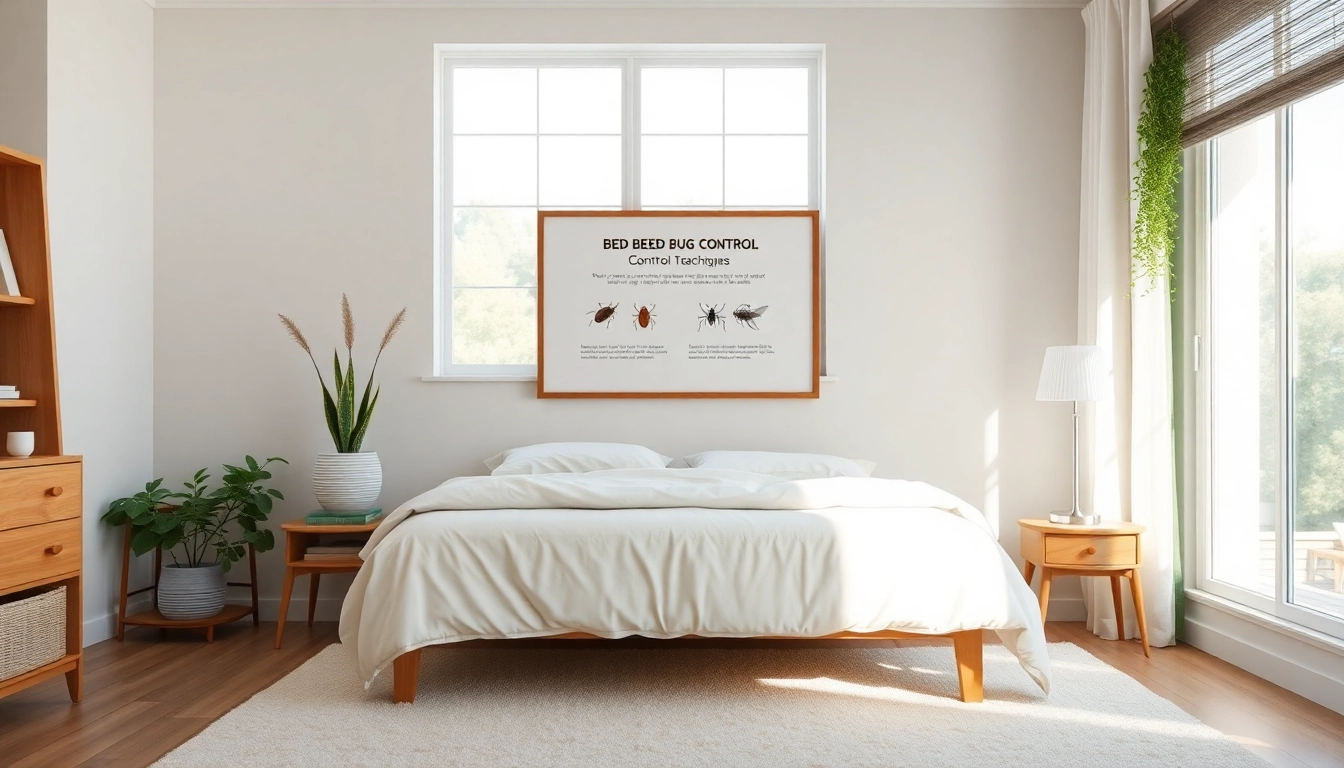Understanding Bed Bugs: Behavior and Characteristics
What Are Bed Bugs?
Bed bugs are small, reddish-brown insects that feed on human blood. Belonging to the Cimicidae family, these pests have a flattened, oval body that allows them to hide easily in small crevices and seams. Adult bed bugs are typically about 1/4 inch in length, similar in size to an apple seed, and lack wings, making them highly reliant on the transportation methods of humans to spread. They are nocturnal creatures, coming out primarily at night to feed, which makes identifying and controlling them a challenging task.
Signs of a Bed Bug Infestation
Detecting bed bugs early is essential for effective bed bug control. Key signs of an infestation include:
- Visible Bed Bugs: Adult bed bugs and their shed skins may be seen in or near sleeping areas.
- Bed Bug Bites: Small, itchy, red spots on your skin that appear in clusters or lines, often occurring on exposed skin.
- Blood Stains: Small bloodstains on sheets and mattresses, often from crushed bugs after feeding.
- Dark Spots: Fecal spots (bed bug excrement) can appear as dark brown or black specks on sheets, walls, or furniture.
Life Cycle and Habits of Bed Bugs
The life cycle of bed bugs consists of several stages: egg, nymph, and adult. Females lay up to 5 eggs per day and can produce hundreds in their lifetime. The eggs are tiny and white, making them difficult to spot. After hatching, nymphs go through five molts before becoming adults, a process that can take as little as five weeks under optimal conditions.
Bed bugs typically inhabit areas close to where people sleep, as they require blood meals to grow and reproduce. Their ability to survive for months without feeding adds to the difficulty of eradication.
Proactive Measures for Bed Bug Prevention
Decluttering and Cleaning Tips
Regular cleaning can minimize the risk of a bed bug infestation. Simplifying the environment can help eliminate potential hiding spots:
- Vacuum Regularly: Frequent vacuuming, particularly in areas like bedrooms and living rooms, can help dislodge and collect any bed bugs or eggs.
- Wash Bedding and Fabrics: Hot water laundering of sheets, pillowcases, and blankets can kill bed bugs and their eggs.
- Reduce Clutter: Keeping your home clutter-free removes many hiding places where bed bugs may dwell.
Sealing Entry Points
Sealing potential entry points can drastically reduce the chances of bed bugs invading your home:
- Inspect and Seal Cracks: Use caulk to seal cracks and crevices in walls, baseboards, and furniture.
- Use Mattress Encasements: High-quality mattress encasements can prevent bed bugs from infesting your mattress and box spring.
- Fix Windows and Doors: Ensure that windows and doors close properly to block entry from outside pests.
How to Prepare for Pest Control Treatments
If you suspect a bed bug infestation, proper preparation for pest control is crucial:
- Declutter Your Home: Remove clutter from the treatment area to allow easy access for exterminators.
- Wash Clothing and Linens: Wash items in hot water to eliminate bed bugs before treatment.
- Inform Your Exterminator: Share all observations with your pest control professional, including where you have seen signs of infestations.
DIY Bed Bug Control Techniques
Natural Remedies and Solutions
For those looking for alternative methods to control bed bug populations, natural remedies can be beneficial, though they are often less effective than professional treatments. Popular options include:
- Essential Oils: Oils such as tea tree, lavender, and peppermint have insect-repelling properties. Use diluted solutions to treat infested areas.
- Diatomaceous Earth: This powder can be sprinkled in areas where bed bugs hide. It works by dehydrating and killing them upon contact.
Heat Treatment Methods
Bed bugs are highly susceptible to heat, making heat treatments an effective control method:
- Steam Cleaning: Employing steam cleaners on bedding, carpets, and seams can kill bed bugs effectively, as they cannot survive temperatures above 120°F (49°C).
- Hot Air Treatment: Professional services may use specialized equipment to heat a room to temperatures lethal to bed bugs.
Using Chemical Treatments Wisely
While chemical treatments can be effective, they should be used sensibly and with caution:
- Select EPA-Registered Pesticides: Always choose pesticides that are specifically labeled for bed bugs.
- Follow Instructions: Adhere strictly to application instructions to maximize effectiveness and safety.
- Use in Combination: Consider combining sprays with other control measures for better results.
Professional Bed Bug Extermination Services
When to Call a Pest Control Expert
Knowing when to seek professional assistance is crucial. Contact a pest control expert if:
- DIY methods have failed to eliminate the problem.
- You see signs of an infestation that have spread beyond a single room.
- You are unsure how to proceed with treatment safely and effectively.
What to Expect from Professional Services
Understanding the process can help ease any anxiety regarding pest control services:
- Initial Inspection: Exterminators will inspect your home to determine the extent of the infestation.
- Customized Treatment Plan: Based on the inspection, they will develop a tailored plan that may include chemical and non-chemical methods.
- Follow-up Treatments: Follow-ups are typical to ensure all bugs, including eggs, have been eliminated.
Comparing Different Treatment Options
Choosing the right treatment option depends on various factors, including severity, personal preference, and budget:
- Heat Treatments: Effective but can be costly; suitable for severe infestations.
- Chemical Treatments: Less expensive but may require more than one application and can pose health risks if misused.
- Integrated Pest Management (IPM): This method combines multiple strategies and is often the most successful in long-term control.
Long-Term Bed Bug Management and Monitoring
Establishing a Routine for Prevention
Long-term bed bug control requires diligence and routine monitoring:
- Regular Inspections: Routinely check bedding and furniture for signs of bed bugs, especially after travel.
- Continued cleaning: Maintain a consistent cleaning schedule for your home to control any potential resurgence.
Effective Monitoring Techniques
Monitoring your environment can play a crucial role in prevention:
- Use Bed Bug Interceptors: Place these traps under bed posts to detect bed bugs before they can climb into bed.
- Dog Inspections: Trained bed bug detection dogs can identify infestations through scent, providing an extra layer of monitoring.
FAQs about Bed Bug Control and Safety
Here are some common questions and answers to help you better understand bed bug control:
- What is the fastest way to get rid of bed bugs in your bed? Regular vacuuming, washing sheets at high temperatures, and using heat treatments are effective strategies.
- Can I treat bed bugs by myself? Yes, but it’s best to combine multiple strategies, including cleaning, heat applications, and approved pesticides, for effective control.


